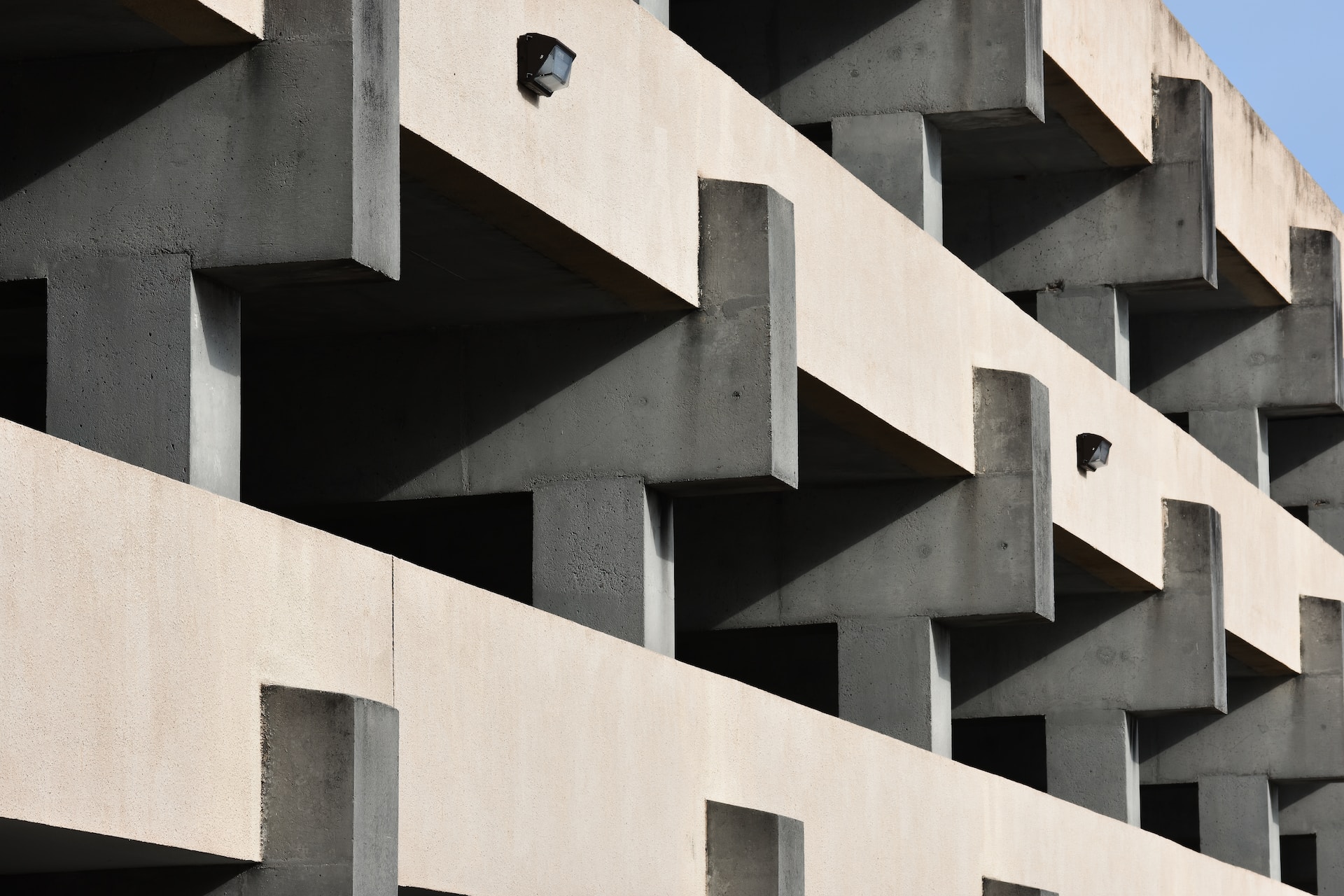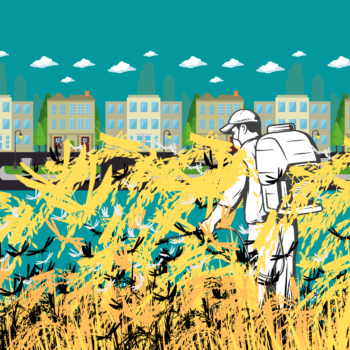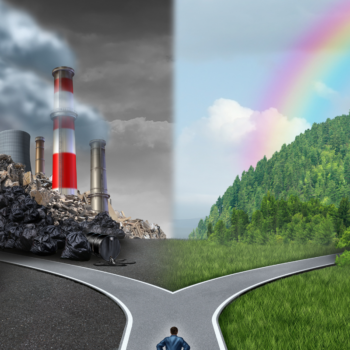|
|
Concrete is one of the most used construction materials in the world. We use concrete to build houses, buildings, roads, and bridges. It’s pretty much inescapable.
But did you know that producing the Portland cement, the binding component that forms concrete, emits large amounts of carbon dioxide and other dangerous pollutants?
Read on to delve into the environmental impacts of cement and concrete and the industry’s sustainability initiatives to reduce their carbon footprint.
Understanding the Difference Between Concrete & Cement
Concrete is a hardened construction material that forms from a mixture of cement (usually Portland cement), water, and aggregates such as crushed rocks, sand, slag, and gravel.
Portland cement, one of the key ingredients of concrete, comprises of a mixture of clay, limestone, and other fine-ground powders that acts as a binder when mixed with water and aggregate. This combination or concrete mix hardens and dries to form a durable construction material that we are all familiar with.
Because of its strength, cost-effectiveness, and versatility, concrete is widely used to build the structural foundation for houses, offices, and commercial buildings, as well roads, bridges, dams and other infrastructure projects.
| CONCRETE | CEMENT |
|---|---|
| A construction material for building structural foundations, slabs, roads, sidewalks, patios, masonry, etc. | A binding element in concrete |
| Made of a mixture of cement, water, and aggregates (sand, crushed stone, gravel) | Made from a mixture of iron, aluminum, calcium, and other substances found in limestone, shells, and silica sands |
| Flexible and forms into any mold | Sets and hardens when combined with water |
| Extremely durable and widely used as a building material in both residential and commercial applications | Can be used on its own for small applications like grout, masonry surfaces, etc. |
The Environmental Impacts of Concrete
Unfortunately, building the modern world comes with massive environmental impacts and looming threats of depletion of our natural resources.
Concrete is the second most consumed material in the world after water, and with that fact comes the alarming consumption of energy, fuel, and water and emissions of carbon dioxide during the manufacturing process.
Carbon dioxide emissions during cement production
Concrete itself has a long life cycle and durability that make it an energy-efficient, sustainable building material. However, the manufacturing of concrete’s key component, cement, is where the real problem lies.
Cement production is the world’s third highest producer of man-made, global-warming CO2. Portland cement, the main binding component of almost all modern concrete, requires an enormous amount of energy to produce.
The majority of the carbon emission comes from the burning of fossil fuels (coal) to generate heat and start the cement-making process. The mixture of limestone, minerals, and raw materials are heated in a kiln that runs non-stop to a temperature of approximately 1500°C, forming pellets or cement clinkers and producing huge CO2 output in the process.
Other (and just as alarming) negative aspects of our heavy dependence on concrete:
- The role of concrete in urban heat island effect. The urban heat island effect is an environmental problem that occurs in cities in which the air temperature is higher than the nearby rural areas. This sweltering heat in urban areas is magnified by buildings, pavements, sidewalks, and other surfaces and structures, which are made mostly or partly out of concrete. Bitumen or asphalt concrete on roads, sidewalks, and construction materials used in cities absorb and store heat during the day and then release it at night. Green spaces replaced by modern structures, along with increased human activity, vehicles, and excessive use of air conditioning systems, contribute to urban heat island effect, which poses numerous threats not just to the environment, but also to human health.
- Deforestation and habitat destruction for raw material extraction. The kiln-heating and calcination process to create Portland cement, which emit large amounts of CO2, are the concrete industry’s most pollutive activities. Mining to extract raw materials such as sand and gravel for concrete also leads to land degradation and water pollution. Moreover, the rapid urbanization results in deforestation and habitat loss. Forests and green spaces are replaced by urban landscapes covered by pavements or buildings. This reduces biodiversity as many natural species cannot adapt to the urban environment.
- Water consumption and air pollution in concrete production. The concrete industry is not just notorious for its energy consumption and greenhouse gas emissions; it is also responsible for around 9% of the industrial water withdrawal worldwide. By 2050, 75% of the water withdrawals for concrete production will be in regions that are already facing water stress. In addition to being water-intensive, the production of cement pollutes the air with toxic substances such as Sulfur dioxide and Carbon monoxide, which can cause or aggravate respiratory issues.
Mitigating Strategies for Sustainable Concrete Use
Almost all stages of concrete production are destructive to the environment – from mining and extracting raw materials to the heating and chemical processes of transforming raw materials into cement pellets.
However, the construction industry has yet to find an alternative building material that has the same longevity, resilience, thermal qualities, and design flexibility of concrete. So what the innovators are looking into is to reduce the carbon footprint during the manufacturing process of concrete.
Traditional Concrete Vs. Sustainable Concrete
The environmental impacts of manufacturing traditional concrete, which is composed mainly of Portland cement, water, and aggregates, has already been discussed above. Now, what is sustainable concrete?
Sustainable concrete differs from traditional concrete in terms of the materials used and the production processes.
Sustainable concrete incorporates the use of eco-friendly materials and processes throughout its production to reduce environmental footprint. The main components of sustainable concrete are Supplementary Cementitious Materials (SCMs), which involves using fly ash, slag cement, and silica fume.
Repurposing these waste byproducts instead of extracting limestone and other raw materials for concrete production is more environmentally responsible and resource-efficient. Repurposing and recycling waste from power plants, steel mills, and other manufacturing facilities also lessen the carbon footprint of cement production as demands for cement are reduced.
Homebuilders and commercial builders can also use recycled aggregates from construction or demolition waste to add to the concrete mix and employ eco-friendly admixtures to decrease the amount of cement needed in the mix.
Furthermore, innovators have come up with sustainable concrete production methods to mitigate carbon dioxide emissions during the manufacturing of cement. These advanced production methods involve capturing CO2 that is generated during the production of cement, and then storing them underground to prevent their release into the atmosphere.
Integration of sustainable concrete in construction planning, development, and building processes contributes to the reduction of CO2 emissions, land degradation and water pollution, conservation of natural resources, and better waste reduction strategies.
The Challenges and Barriers
Despite the environmental benefits of sustainable concrete, encouraging an entire industry for a widespread use of eco-friendly concrete is easier said than done.
One of the biggest challenges is that the initial costs for sustainable concrete materials and production techniques can sometimes be higher than traditional concrete. So aside from the construction industry’s resistance to change, the initial higher costs of adopting sustainable concrete makes it even harder to convince them that it’s worth investing.
Another challenge of getting sustainable concrete into the industry is convincing contractors and clients to use recycled materials or support increased uptake of cement-free concrete. But this may be due to their lack of awareness of the advantages and applications of sustainable concrete.
Future Outlook & Possibilities
Partnerships between construction companies and environmental organizations can overcome technical limitations and scale up sustainable concrete solutions.
For instance, the U.S. Green Building Council’s LEED rating systems promote environmentally responsible and resource-efficient practices for home and commercial building. This partnership can also pave the way for integration of sustainable concrete in urban planning and development.
Many sustainable concrete companies are also incorporating the captured carbon dioxide in their concrete production to lessen carbon emission. While cement manufacturing companies like CarbonCure Technologies Inc. and CEMEX S.A.B. de C.V. are adopting “Green Cement” by using industrial by-products to lower greenhouse gas emissions and conserve natural resources.
Final Thoughts
We use concrete to build houses, buildings, and roads. So the market demand for traditional concrete isn’t going to slow down anytime soon.
However, by incorporating green or eco-friendly concrete alternatives and low-carbon cement production and recycling and repurposing concrete waste, we can take the beneficial steps towards a more sustainable construction industry.
But to really make a difference, we as a society should rethink how we are building our modern worlds and shift to a culture of energy and resource conservation.












